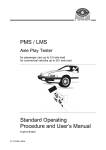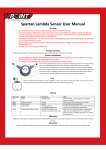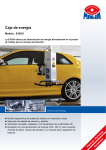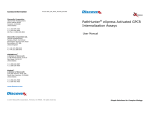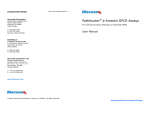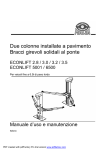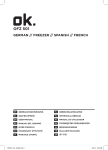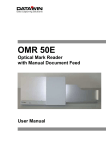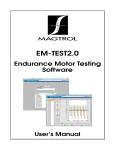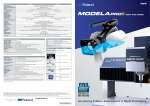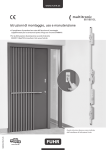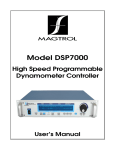Download Test Instructions for AUDI Vehicles to be tested on a MAHA Chassis
Transcript
Test Instructions for AUDI Vehicles to be tested on a MAHA Chassis Dynamometer Vehicle-specific and environment-related factors may have an effect on the measurement results of engine power measurements on roller dynamometers. To obtain precise and reproducible test results, the vehicle has to be conditioned for the test. Furthermore, these measurements have to be done at comparable conditions by considering vehicle-specific characteristics. In collaboration with Maschinenbau Haldenwang, AUDI AG, Ingolstadt, have worked out detailed test instructions exclusively for engine power measurement of AUDI vehicles on a MAHA Chassis Dynamometer for this purpose. Test Instructions for Engine Power Measurement Chassis Dynamometer: MAHA LPS 2000 or LPS 3000 1. Purpose These test instructions serve to set out the basic conditions for wheel power measurement in writing and are to provide a basis for reproducible measurements. 2. Area of Application These test instructions only apply to wheel power measurements on MAHA Chassis Dynamometers. The procedure described below is meant to supplement the existing MAHA user manual. Audi reserves the right to verify all measurement results and considers them not binding for them. Audi will neither hold liable for improper wheel power measurements nor for inaccurate or wrong test results. 3. Procedure How to prepare the vehicle: Read out and - if necessary - erase the error memories of the electronic control unit and of the transmission control system. Run up the motor. Should it not be possible to erase the error memory, record this in writing. First pick up a suitable engine RPM signal. For supercharged engines it is also advisable to pick up the temperature of the suction tube via an additional temperature measuring point (suction tube must be leakproof) or from the CAN. Measure air temperature and air pressure inside the test room. Position the room temperature sensor near to the air intake area of the air filter. The following edge conditions have to be in line with EC 80/1269: Temperature: 15 – 35 °C Air pressure: 800 – 1100 hPa How to carry out the measurement: Tune up the vehicle on the rollers for at least 5 minutes at ca. 100 km/h before every first measurement. During every subsequent measurement the vehicle should be tuned up at least 2 minutes. Switch air conditioner to OFF or ECON position. Switch off all electrical consumer loads. Please be sure that the charge state of the battery is at least 90 %. Drive slip control and ESP systems have to be deactivated. Switch into fourth gear and apply accelerator pedal to full load without kick-down. Load measurement is running. The speed increment ramp should be as low as possible. (Keep an eye on the temperature of the suction tube.) Select the RPM ramp accordingly so that the RPM band will be passed in at least 90 seconds. For turbocharged engines a compromise between dynamic behaviour and limit temperature of the suction tube has to be found. During discrete measurement at least three further rpm points (max. rpm, max. engine power) are approached (suction tube temperature!) and compared to the values determined during continuous measurement. Compare the discrete measurement values with the target values. Evaluation and Presentation of Results: Compare the continuous measurement results of vehicles with manually shifted transmission which are based on the standard conditions and have been determined in the nominal engine power range with the target curves. In the nominal torque range discrete measurement is precise. The loaddependent losses are included in the adaptation factors of the chassis dynamometer altogether. Due to their higher load-dependent losses inside the drive train the measurement values of vehicles with automatic transmission (incl. Multitronic) have to be corrected as follows: Tiptronic: Multitronic: quattro: additionally + 3.5 % + 4.5 % + 1%, also applies to vehicles with manually shifted transmission Example: A6 3.0l Tiptronic quattro Measured standard engine power: 155 kW Corrected standard engine power: 155 x 1.035 x 1.01= 162 kW The same formula can also be used for the torque range. For this purpose the discrete measurement results have to be used, however. This measuring method does not comply with EC Standards 80/1269 to 19/99. The edge conditions have been adapted to this standard within their scope of physical feasibility. Example for influence of dynamic portion during continuous measurement: 1.) Mass Inertia Moment of Engine RPM range: 1000 – 6500 min-1 Measuring time of load measurement: 20 sec Mass inertia moment of engine: 0.3 kgm2 M = I*w‘ results in M = 0.3*(6500 - 1000)/60*2*PI/20 = 8.6Nm At 6000 min-1 8.6 Nm correspond with 5.4 kW. 2.) Load-Dependent Losses inside Gear The difference of losses between unloaded and loaded condition of standard singleaxle drives is approx. 2 %. Systems which supply energy to the drive train during drag power measurement (e. g. hydraulic pump drive for vehicles with automatic transmission) have to be regarded separately. The above-mentioned correction values apply to Audi vehicles. As relative humidity will not be considered, the max. value during measurement at an outside temperature > 25 °C should not exceed 30 %. Example: According to EC80/1269 the error is at 990 hPa/35 °C and 30 % rel. humidity compared to 990 hPa/35 °C/0 % (humidity not considered) at 2 % engine power difference (standard value 990 hPa/25 °C/0 %). Maschinenbau Haldenwang AUDI AG I/EG-331



